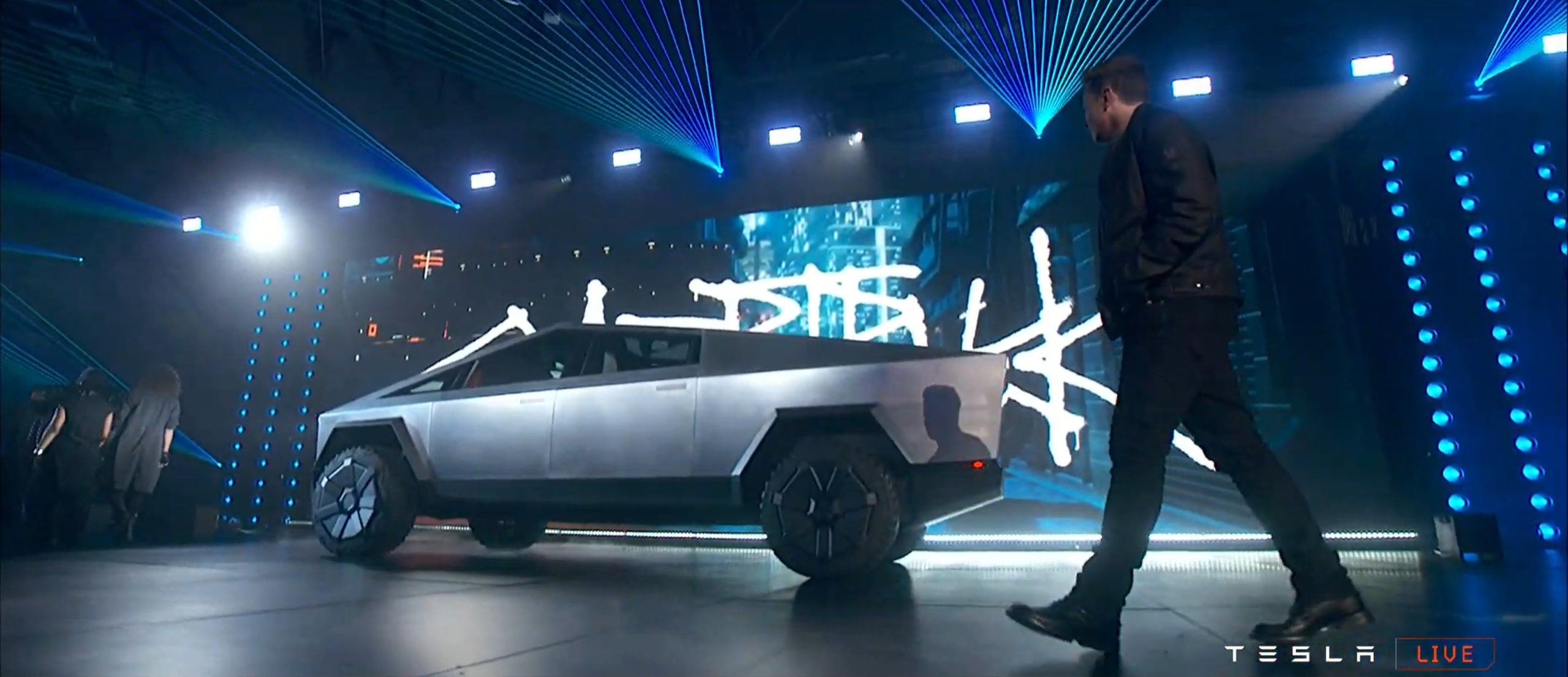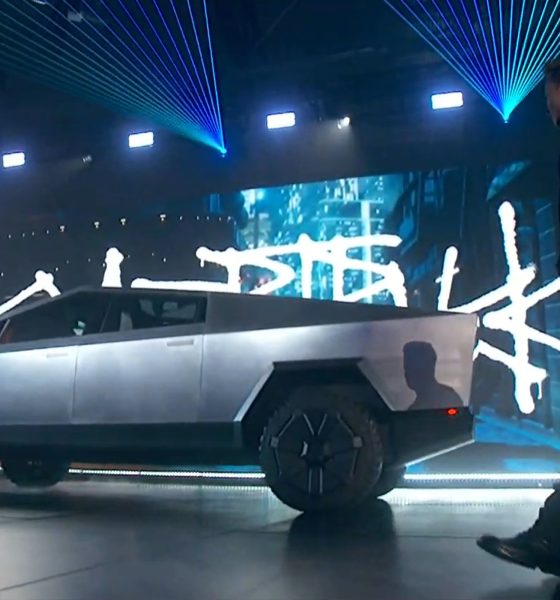Welcome to a FREE preview of our weekly exclusive! Each week our team goes ‘Beyond the News’ and handcrafts a special edition that includes our thoughts on the biggest stories, why it matters, and how it could impact the future.
You can receive this newsletter along with all of our other members-exclusive newsletters, become a premium member for just $3/month. Your support goes a long way for us behind the scenes! Thank you.
One week after its reveal, I’m not sure there’s much left to be said about Tesla’s first foray into the truck world. The specs are obviously impressive, and the design has mixed reviews with the predictable players taking their predictable positions. I hadn’t planned on talking much about Cybertruck in my weekly newsletter column since, at this point, literally everyone with something to say about it has done just that. But something has been bothering me about the discussion.
I don’t like the divide the Cybertruck’s design is creating, and I don’t blame Elon Musk or Tesla. I blame the part of the Tesla fan base that is responding very poorly to criticism of a product that was expected to draw that very same criticism.
On one end, there’s the steady Tesla crowd ready to buy anything the company produces that their budget can afford. On the other end, there’s the average consumer who is paying attention to what’s going on in the green car movement and imagining how one of the latest electric cars would fit their life and style. After all, the decision to buy a car has numerous factors (literally) driving it, and an electric car has even more factors built-in thanks to the fact that the industry is still new. For example, home charging isn’t an option for a lot of people, and filling up is already a chore when it takes 5 minutes, much less 30+ minutes at a Supercharger. There would need to be several reasons for the average consumer (read: someone that’s not part of the Tesla fan base or electric car crowd) to make the decision to buy one.
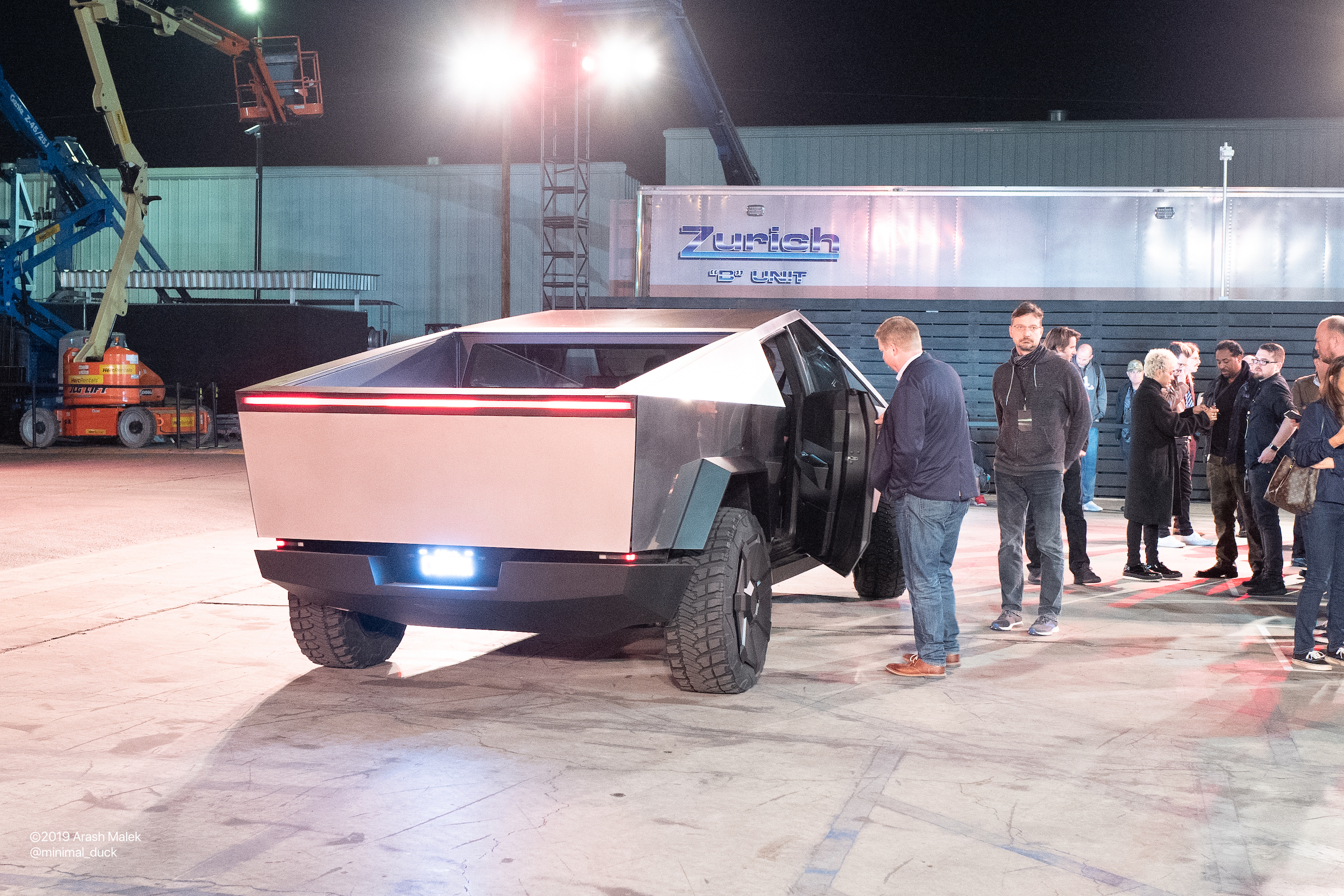
That being said, if someone doesn’t like Cybertruck’s design, they’re not going to want to buy it unless there’s literally no other vehicle that meets their needs and wants with a more appealing design. And that’s okay. It doesn’t mean there’s something wrong with their opinion. It doesn’t mean they’re a boring person that’s part of a dying culture that will cease to exist in 50 years. It doesn’t mean Tesla will fail at their mission because its radical truck design doesn’t appeal to people that aren’t into radical truck designs. It just means that they don’t like it. Frankly, I don’t like it, either. I also didn’t expect to like it. I also expected to maybe like it but not want to ever buy it.
The Cybertruck isn’t just about thinking “outside the box” by creating a truck that looks like an odd box. It has a design that says something about the personality of the owner, and unlike a lot of conventional car designs, its message is overwhelming and distracting. If that’s your personality, great. If it’s not, great. Pushing this idea that if you don’t like the Cybertruck, or rather, you don’t like dystopian science fiction from the 80s and 90s, there’s something wrong with you… It’s feeding into a stereotype about electric cars that is annoying if not outright rude, dismissive, and very unhelpful for the green car movement.
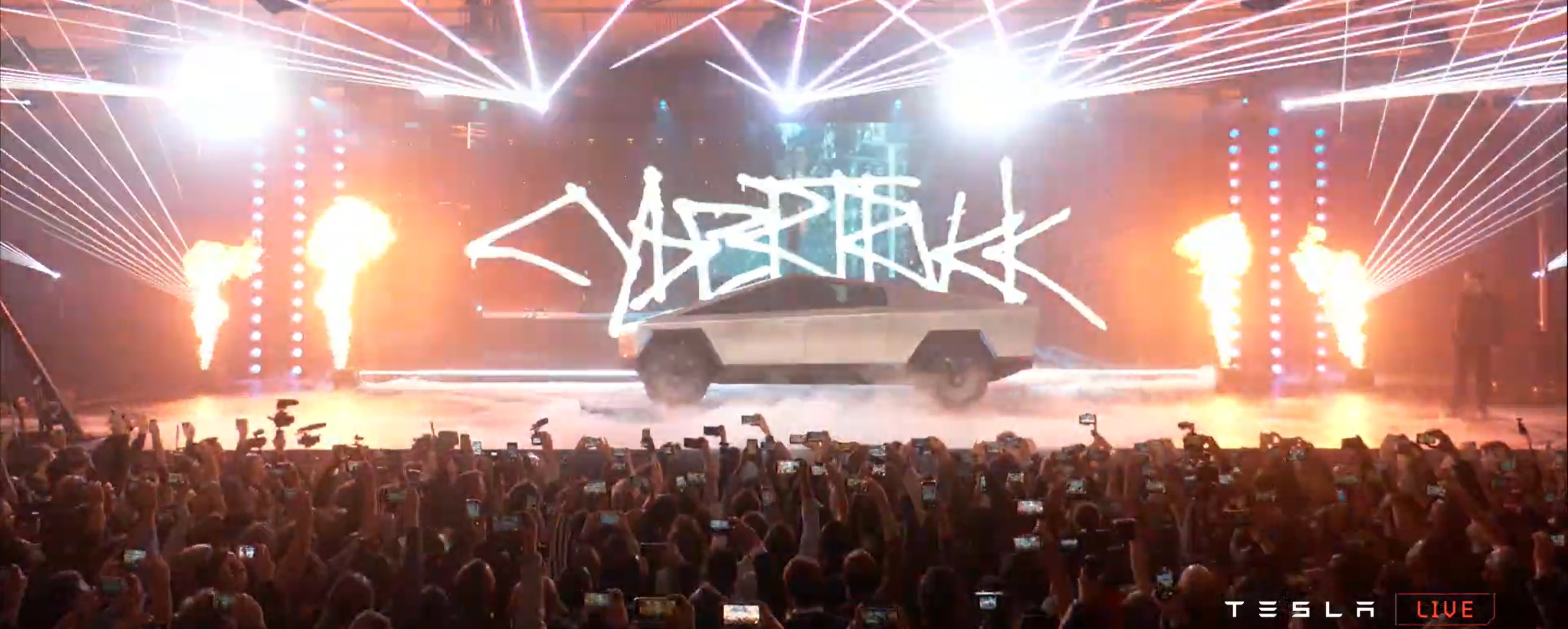
Actually, what it starts to do is remind people (like me) of this long-term dystopian vision that they really really really don’t want that tech people are always pushing for as “cool” or “the unavoidable future.” Elon Musk might watch Blade Runner and love the designs it inspires, but I watch that movie and shudder to think of such an awful world to exist in. It’s one thing to like the artistic side of science fiction, but there are big glaring warnings about the worlds it represents. In Total Recall, for example, many like the whole Mars colonization thing it’s based on, but the back story is this company using mind control and manipulation while causing God-awful deformities in the people living there. Instead of focusing on that part, we wear shirts with “Get Your Ass to Mars” as a rallying cry for a mission to the red planet.
The inspiration to live on other worlds is something I love. What I don’t love is pushing the whole movie as the ideal future. That’s what I see in Cybertruck. I like it as a cool, movie-inspired design that will appeal to people who really like that style. I don’t like it as a representation of a full-on future that I have to like or I’m an idiot or a hater. In my opinion, throwing those types of stones at people who don’t like Cybertruck’s design feeds into the notion that if you’re not on board with the dystopian world it was inspired by, you have no place in the world’s future.
I like the Victorian touches of the mid-century A-frame I’m building, and the micro-controller watering and monitoring system I’m working on that will help with my gardening fuse the traditional with the new. I still don’t see a place for an angular, military-style truck in my driveway. It’s not my thing, and I really hope it stays as just a thing that some people like and not representative of a future that will dismantle my farm dreams in favor of robots vs. humans defending their right to live. Sheesh.
That’s one perspective the (typed) shouting matches about Cybertruck push. Another one is full of eye rolls and comments about Kool-Aid drinking. I honestly thought the point of the design was probably that Musk finally had the opportunity to do a vehicle that he knew would have a small market appeal but did it anyway because he just wanted to do it. He’d already done conventionally in the Model S, 3, and Y, pushed the limits a bit with the X and Semi, and was working on a sports car masterpiece with the next-gen Roadster.
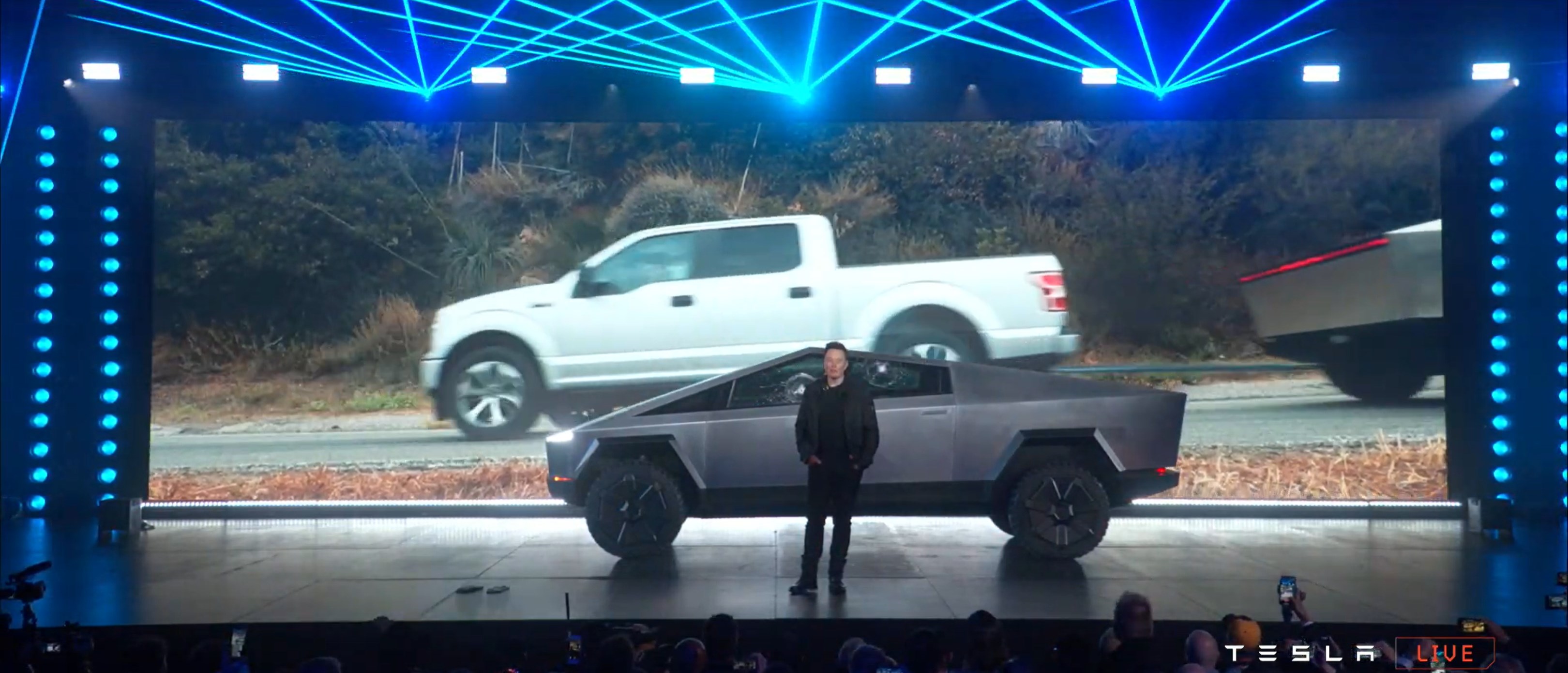
I didn’t think that Cybertruck was supposed to upend Ford’s or Chevy’s or Toyota’s hold on pickups, so when that argument started making the rounds and doubters shouted down… I was surprised. If there’s one way to be seen as a “Tesla bro” or not be taken seriously by the very consumers you’re trying to win over, that’s it. Also, 250k people putting down $100 on a truck that they don’t have to fork over the full cash to buy for at least another couple of years doesn’t prove that the design is a mainstream hit, either. It’s an encouraging sign for sure, but not as encouraging as the 350k Model 3 reservations in that same one-week timeframe that required $1,000 to make.
In summary, the Cybertruck might win people over in the mainstream, and it might not. The specs combined with the gas savings might pull in commercial customers and start a new movement in that direction on a design level. It also might not. Tesla could just revise its design a bit while keeping the specs and appeal to a much broader base (which I’m hoping for), but it still might not.
Perhaps yelling at people that don’t like it that they’re dumb and have no taste might win them over eventually. It also might not. Being obnoxious about the Cybertruck to people on the fence about electric cars might cull a new consumer base.
But again, it might not.

Lifestyle
Tesla Model S Plaid battles China’s 1500 hp monster Nurburgring monster, with surprising results
There is just something about Tesla’s tuning and refinement that makes raw specs seem not as game-changing.

The Tesla Model S Plaid has been around for some time. Today, it is no longer the world’s quickest four-door electric sedan, nor is it the most powerful. As per a recent video from motoring YouTube channel Carwow, however, it seems like the Model S Plaid is still more than a match for some of its newer and more powerful rivals.
The monster from China
The Xiaomi SU7 Ultra is nothing short of a monster. Just like the Model S Plaid, it features three motors. It also has 1,548 hp and 1,770 Nm of torque. It’s All Wheel Drive and weighs a hefty 2,360 kg. The vehicle, which costs just about the equivalent of £55,000, has been recorded setting an insane 7:04.957 at the Nurburgring, surpassing the previous record held by the Porsche Taycan Turbo GT.
For all intents and purposes, the Model S Plaid looked outgunned in Carwow’s test. The Model S Plaid is no slouch with its three motors that produce 1,020 hp and 1,420 Nm of torque. It’s also a bit lighter at 2,190 kg despite its larger size. However, as the Carwow host pointed out, the Model S Plaid holds a 7:25.231 record in the Nurburgring. Compared to the Xiaomi SU7 Ultra’s record, the Model S Plaid’s lap time is notably slower.
Real-world tests
As could be seen in Carwow’s drag races, however, Tesla’s tech wizardry with the Model S Plaid is still hard to beat. The two vehicles competed in nine races, and the older Model S Plaid actually beat its newer, more powerful counterpart from China several times. At one point in the race, the Xiaomi SU7 Ultra hit its power limit due to its battery’s temperature, but the Model S Plaid was still going strong.
The Model S Plaid was first teased five years ago, in September 2020 during Tesla’s Battery Day. Since then, cars like the Lucid Air Sapphire and the Xiaomi SU7 Ultra have been released, surpassing its specs. But just like the Model Y ended up being the better all-rounder compared to the BYD Sealion 7 and the MG IM6, there is just something about Tesla’s tuning and refinement that makes raw specs seem not as game-changing.
Check out Carwow’s Model S Plaid vs Xiaomi SU7 drag race video below.
Lifestyle
500-mile test proves why Tesla Model Y still humiliates rivals in Europe
On paper, the BYD Sealion 7 and MG IM6 promised standout capabilities against the Model Y.

BYD is seeing a lot of momentum in Europe, so much so that mainstream media has taken every opportunity to argue that the Chinese automaker has beaten Tesla in the region. But while BYD sales this year in Europe are rising and Tesla’s registrations remain challenged, the raw capabilities of vehicles like the Model Y are difficult to deny.
This was highlighted in a 500-mile challenge by What Car? magazine, which showed that the new Tesla Model Y is more efficient, cheaper to run, and more reliable than rivals like the BYD Sealion 7, and even the nearly 400 KW-charging MG IM6.
Range and charging promises
On paper, the BYD Sealion 7 and MG IM6 promised standout capabilities against the Model Y. The Sealion 7 had more estimated range and the IM6 promised significantly faster charging. When faced with real-world conditions, however, it was still the Model Y that proved superior.
During the 500-mile test, the BYD nearly failed to reach a charging stop, arriving with less range than its display projected, as noted in a CarUp report. MG fared better, but its charging speeds never reached its promised nearly-400 kW charging speed. Tesla’s Model Y, by comparison, managed energy calculations precisely and arrived at each stop without issue.
Tesla leads in areas that matter
Charging times from 25% to 80% showed that the MG was the fastest at 17 minutes, while Tesla and BYD were close at 28 and 29 minutes, respectively. Overall efficiency and cost told a different story, however. The Model Y consumed 19.4 kWh per 100 km, compared to 22.2 for MG and 23.9 for BYD. Over the full trip, Tesla’s charging costs totaled just £82 thanks to its supercharger network, far below BYD’s £130 and MG’s £119.
What Car? Magazine’s testers concluded that despite BYD’s rapid sales growth and the MG IM6’s seriously impressive charging speeds, Tesla remains the more compelling real-world choice. The Model Y just offers stability, efficiency, and a proven charging infrastructure through its Supercharging network. And as per the magazine’s hosts, the Model Y is even the cheapest car to own among the three that were tested.
Watch What Car? Magazine’s 500-mile test in the video below.
Lifestyle
Tesla Cybertruck slapped with world’s least intimidating ticket, and it’s pure cringe
One cannot help but cringe and feel second-hand embarrassment at the idea of a person just driving around with a stack of these babies.

A Cybertruck parked at Stanford Shopping Center in California was recently hit with what might be the most try-hard piece of paper ever slipped under a wiper blade: a “fake citation” accusing the driver of supporting a “fascist car.”
The note, shared on X by Tesla staff program manager Ryan Torres, quickly made the rounds on X, where it quickly gained attention as an example of how not to protest.
The world’s least intimidating ticket
According to the citation, the supposed “violation” was “driving a fascist car.” The remedial action? Take the bus, call an Uber, or ride a bike. The note also dubbed Elon Musk a “chainsaw-wielding Nazi billionaire.” Now, protests against Tesla and Elon Musk have become commonplace this year, but one cannot help but cringe and feel second-hand embarrassment at the idea of a person just driving around with a stack of fake anti-Tesla/Musk citations.
Torres pointed out the irony himself in his post on X. Tesla currently employs over 140,000 Americans, and SpaceX has put the U.S. firmly back at the top of space technology. As Torres put it, maybe the person behind the world’s least intimidating ticket should “read a book on innovation before vandalizing” other people’s property.
Peak performative clownery
Not to mention that the fake ticket’s logic collapses under its own weight. EVs like the Cybertruck are literally designed to reduce emissions, not “destroy the economy.” If anything, Tesla has bolstered the United States’ economy by fueling jobs in engineering, manufacturing, and clean energy. It’s not the first time a Tesla has been the target of vandalism or politically charged notes, but this one stands out for sheer cringe value.
Torres summed it up neatly: “Peak clownery.” On that point, at least, the citation earns full marks. In a way, though, perhaps cringe fake tickets are not as bad as the literal firebombs that were being thrown at Tesla stores and cars earlier this year because some critics were gleefully misinformed about Elon Musk.
